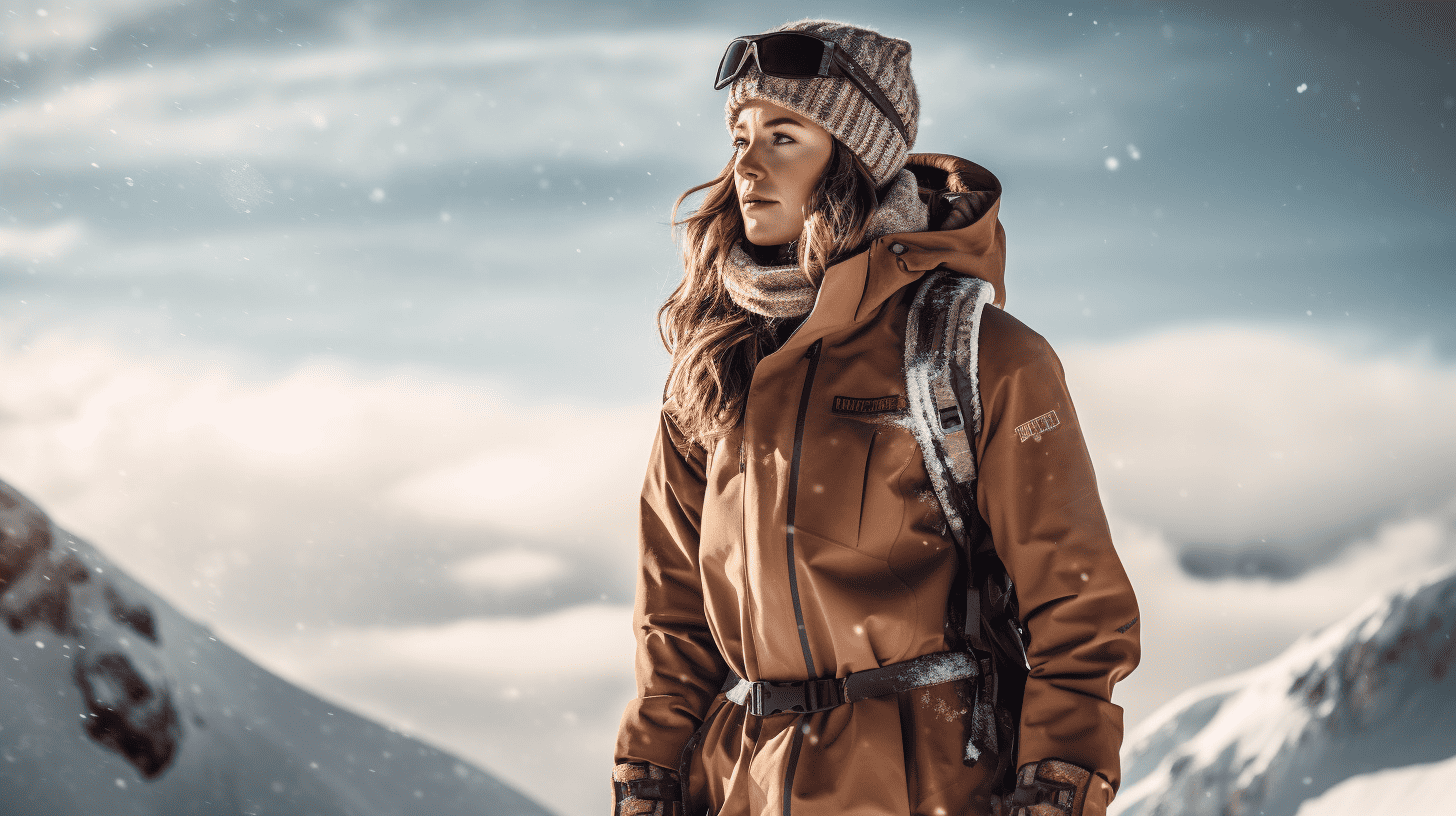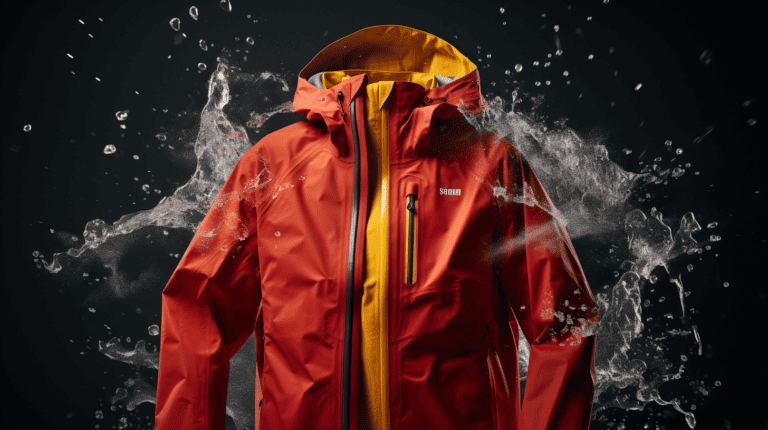Stay Warm and Cozy: Ultimate Winter Sports Layering Guide

Proper layering is not just about fashion; it can make all the difference in enhancing your performance and ensuring a comfortable experience on the slopes. When engaging in high-intensity activities like skiing or snowboarding, having essential layers becomes even more important.
Why? Well, let’s dive deeper into it. Essential layers act as your skin layer against the harsh elements of winter. They provide insulation and help regulate body temperature during varying intensity levels. Whether you’re conquering steep slopes or gliding gracefully through powder, having the right clothing will protect you from wind, cold temperatures, and even moisture.
So, if you’re looking for tips on how to stay warm and comfortable while enjoying winter sports, I’ve got some great advice for you!
Key Takeaways
Dressing for Winter Sports: Layering Basics

Dressing appropriately is essential to stay comfortable and protected in cold weather conditions. Layering is the key to achieving optimal warmth and insulation while allowing flexibility and breathability.
By understanding the importance of layering and the specific functions of each layer, you can ensure a comfortable and enjoyable experience on the slopes or ice.
Base Layers
Base layers are the foundation of your winter sports attire. These lightweight garments are designed to sit close to your skin, wicking away moisture and regulating body temperature. Here are some options for base layers:
- Merino baselayers: Made from natural merino wool, these provide excellent insulation and odor control.
- Wool baselayers: Another natural option, wool retains heat even when wet, making it ideal for high-intensity activities.
- Synthetic baselayers: These man-made materials offer quick-drying properties and durability.
Mid-layers
Mid-layers provide additional insulation while trapping warmth between your base layer and outer layer. They come in various forms such as fleece jackets, sweaters, or vests. Consider these mid-layer options:
- Fleece jackets: Lightweight yet warm, fleece jackets offer excellent breathability.
- Sweaters: Classic all-around options that provide warmth without compromising style.
- Vests: Perfect for added core warmth while allowing freedom of movement.
Outer Layers
Outer layers protect you from wind, snow, and rain while allowing moisture to escape from within. Look for waterproof and breathable materials such as Gore-Tex or similar technologies. Some outer layer options include:
- Ski jackets: Specifically designed for winter sports with features like powder skirts and helmet-compatible hoods.
- Snow pants/bottoms: Insulated bottoms that keep your legs warm and dry during snowy adventures.
- Shell jackets/pants: Lightweight options that offer protection against wind and precipitation.
Choosing the right fabrics and materials for each layer is crucial. Opt for moisture-wicking and quick-drying materials to keep you dry and comfortable throughout your winter sports activities. Remember, layering allows you to adjust your clothing based on the weather conditions and your activity level, ensuring maximum comfort and insulation.
Stay Warm: How to Dress for the Slopes

Winter sports are exhilarating and physically demanding. To fully enjoy your time on the slopes, it’s crucial to dress appropriately and stay warm. Here are some essential layers and strategies to help you regulate your body temperature while engaging in high-intensity winter sports.
Dressing Appropriately:
- Base Layer: Start with a moisture-wicking base layer that fits snugly against your skin. This will keep you dry by wicking away sweat.
- Insulating Layer: Add an insulating layer to trap heat close to your body. Choose materials like fleece or down for optimal warmth.
- Outer Shell: A waterproof and windproof outer shell is essential to protect you from the elements. Look for jackets and pants with sealed seams for maximum protection.
Effective Layer Management:
- Temperature Regulation: Optimize your comfort by adding or removing layers based on weather conditions and physical exertion levels.
- Ventilation Options: Look for garments with ventilation zippers or mesh panels that allow airflow when you need to cool down.
- Moisture Control: Avoid cotton as it retains moisture, which can make you feel colder. Instead, choose synthetic or merino wool fabrics that wick away sweat.
Additional Accessories:
- Neck Gaiter or Balaclava: These accessories provide extra insulation for your neck and face without hindering mobility.
- Hand and Foot Warmers: Consider using disposable hand warmers or heated socks to keep extremities cozy during long hours on the slopes.
- Helmet Liner or Hat: Protect your head from heat loss by wearing a helmet liner or hat under your helmet.
By following these tips, you can enjoy winter sports while staying comfortably warm on the slopes. Remember, proper layer management is key, so adjust accordingly as temperatures fluctuate throughout the day!
Insulating and Moisture-Wicking Essentials for Cold Weather
Staying warm and dry is crucial. That’s why having the right insulating and moisture-wicking essentials is essential. Discovering materials that help retain body heat in freezing conditions and fabrics that keep you dry by transferring sweat away from your skin can make a world of difference in your comfort and performance.
Insulating Materials for Cold Temperatures
Insulation is key when facing cold weather conditions. One excellent option is merino wool, known for its exceptional warmth and breathability. Smartwool Classic Thermal, made from merino wool, is a top choice for many winter athletes. This performance wool keeps you warm even in frigid temperatures while allowing your body to breathe.
Moisture-Wicking Fabrics to Keep You Dry
Sweat can quickly become an enemy in cold weather as it cools against your skin, making you feel colder. That’s where moisture-wicking fabrics come into play. Smartwool Classic All-Weather Hoody utilizes moisture-wicking technology to pull sweat away from your body, keeping you dry and comfortable throughout your activities.
Enhanced Comfort and Hypothermia Prevention
Combining insulation with moisture-wicking capabilities creates the ultimate winter sports gear. The Smartwool Classic Warm Long Sleeve Hoodie offers both features in one garment. Its merino wool construction provides insulation while the moisture-wicking properties ensure you stay dry during intense physical exertion.
Dressing to Block the Wind and Stay Cozy on the Slopes

Dressing appropriately is essential for staying warm and comfortable on the slopes. Protecting yourself from the biting wind is crucial, as it can quickly sap your body heat and make your experience less enjoyable. Here are some tips on how to dress to block the wind and stay cozy during your winter adventures.
Windproof Outerwear Options
To combat the chilling winds, consider investing in windproof outerwear specifically designed for winter sports enthusiasts. These garments often feature innovative technologies that create a barrier against gusts of wind, keeping you protected and cozy. Look for ski clothing made with face fabric that has excellent wind resistance properties.
Additional Accessories
In addition to windproof outerwear, there are several accessories that can provide extra protection from wind chill. Face masks or neck gaiters are excellent options for shielding your face and neck from cold air while skiing or snowboarding. They not only help retain warmth but also prevent frostbite in extreme conditions.
Layering for Optimal Warmth
Layering is key. Start with a long-sleeve base layer that fits snugly against your skin, wicking away moisture while providing insulation. Opt for thermal materials like merino wool or synthetic fabrics designed specifically for cold weather.
Next, add an insulating mid-layer such as a zip-neck fleece or down jacket. These garments trap heat close to your body, providing additional warmth without restricting movement. Look for options with thumb loops or hugging cuffs to keep sleeves in place while you’re active.
Finally, top off your outfit with a windproof outer layer like a waterproof shell jacket and pants. These will act as a shield against strong winds while keeping you dry in snowy conditions.
By following these guidelines and incorporating wind-blocking layers into your winter sports attire, you’ll be well-prepared to tackle the slopes while staying cozy and comfortable. So gear up with the right clothing, accessories, and layering techniques, and enjoy your skiing or snowboarding adventures to the fullest!
Mastering Essential Layers for Winter Sports
Gain Expert Tips on Layering Techniques
- Utilize baselayers to create a foundation of warmth and moisture-wicking properties.
- Choose baselayers that are suitable for specific winter sports, such as skiing or snowboarding.
- Layer up with additional clothing items to enhance insulation and protection against the cold.
- Experiment with different layer thicknesses to find the right balance between warmth and flexibility.
Adjust Layers Based on Changing Weather Conditions
- Stay prepared by monitoring weather forecasts before heading out for your winter sports activities.
- Adapt your layers throughout the day to accommodate temperature fluctuations and changing weather conditions.
- Add or remove layers as needed to maintain comfort and avoid overheating or excessive cold.
Importance of Proper Fit and Layer Order
- Ensure that each layer fits properly, allowing freedom of movement without being too loose or restrictive.
- Follow the classic layer order: baselayer, midlayer, and outer layer.
- The baselayer should be snug against the skin, while the midlayer provides insulation, and the outer layer offers protection from wind, snow, and moisture.
- Optimize performance by choosing high-performance materials designed specifically for winter sports.
Mastering essential layers for winter sports is key to enjoying outdoor activities in cold temperatures. By gaining expert tips on layering techniques, you can achieve optimal warmth while maintaining flexibility during your favorite winter sports endeavors. Understanding how to adjust your layers based on changing weather conditions throughout the day will ensure you stay comfortable regardless of temperature fluctuations. Recognizing the importance of proper fit and layer order is crucial for maximum comfort and performance.
So remember: choose suitable baselayers tailored to your preferred winter sport, experiment with different thicknesses for flexibility, adapt your layers as weather conditions change during the day, prioritize proper fit in each layer for unrestricted movement, follow the classic order of baselayer-mid layer-outer layer, and select high-performance materials for enhanced performance.
With these essential layering techniques in your arsenal, you’ll be well-prepared to tackle winter sports activities with comfort and confidence. Stay warm, stay safe, and enjoy the thrill of the snowy slopes!
Final Thoughts and Tips
You now have a solid understanding of the essential layers needed to conquer winter sports. By following these layering basics, you’ll be able to stay warm, dry, and comfortable on the slopes. Remember, layering is all about trapping heat while wicking away moisture, so make sure to choose your materials wisely.
To ensure you’re fully prepared for your winter adventures, here are a few final tips. First, always check the weather forecast before heading out and adjust your layers accordingly. Second, don’t forget to protect your extremities with gloves or mittens, warm socks, and a hat or helmet liner. Lastly, experiment with different combinations of layers to find what works best for you – everyone’s comfort level varies.
Now that you’re armed with this knowledge, it’s time to hit the slopes and enjoy an epic winter sports experience!
FAQs
Can I wear cotton as a base layer?
It’s best to avoid cotton as a base layer because it retains moisture instead of wicking it away from your body. Opt for synthetic or wool materials instead.
How many mid-layers should I wear?
The number of mid-layers depends on the temperature and personal preference. Start with one mid-layer and add more if needed.
Are down jackets suitable for winter sports?
Down jackets can provide excellent insulation but may not be ideal if there’s a chance of getting wet. Consider using them as an outer layer in dry conditions.
Should I wear multiple pairs of socks?
Wearing multiple pairs of socks can restrict blood flow and lead to discomfort. Instead, invest in high-quality thermal socks that provide sufficient warmth.
Do I need special pants for winter sports?
Yes! Look for waterproof and insulated pants designed specifically for winter sports activities. They will keep you dry and warm throughout your adventures.






